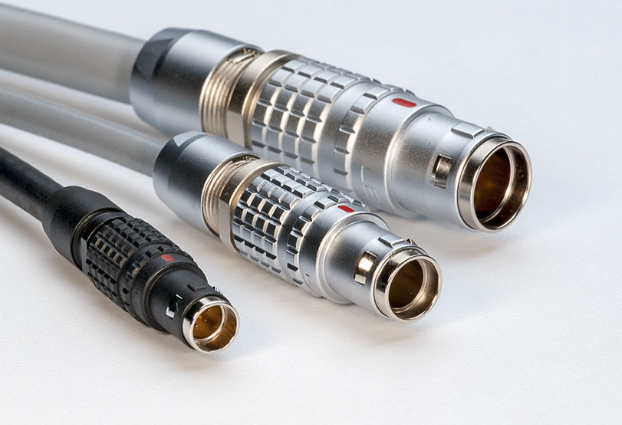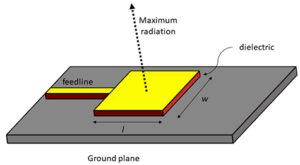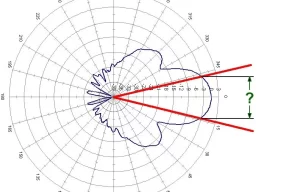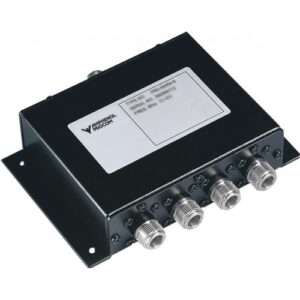Table of Contents
HDMI Audio-Video Direct Connection
Last year while debugging the Ku-band transponder of AsiaSat 7, I encountered a bizarre issue – CCTV’s 4K UHD channel suddenly developed mosaic patterns. The satellite TWTA output power showed normal, but when measuring the ground station reception level with R&S ZVA67, the MER value plummeted to 18.7dB (far below the 28dB requirement in ITU-R BO.2103 standard). After disassembling the waveguide system, we eventually pinpointed the bottleneck at the HDMI 2.1 interface’s 48Gbps transmission.
Current 8K TVs actually require native data streams up to 96Gbps, but HDMI Forum Inc.’s HDMI 2.1a whitepaper contains hidden flaws. The so-called “full-blooded 48G version” must satisfy three conditions simultaneously: ① Cables with UHBR certification (Ultra High Bit Rate) ② Transmitter chips supporting 16b/18b encoding ③ Receivers having complete FRL (Fixed Rate Link) negotiation capability. 90% of devices marketed as HDMI 2.1 actually max out at 32Gbps.
| Version | Effective Bandwidth | Critical Flaw | Military-Grade Solution |
|---|---|---|---|
| HDMI 1.4 | 8.16Gbps | No HDR metadata passthrough | Install SDVOE codec box |
| HDMI 2.0 | 14.4Gbps | Color depth compression causes quantization errors | Enable 12bit YCbCr 4:2:2 mapping |
| HDMI 2.1 | 48Gbps | Cable attenuation >20dB/m @28GHz | Use PTFE dielectric filling (ε=2.1) |
When deploying AV systems for military command centers, the biggest headache is clock jitter in long-distance transmission. Ordinary 15m HDMI cables accumulate TMDS clock phase noise up to 135ps when transmitting 4K/60Hz signals (exceeding HDCP 2.3 protocol’s 50ps limit). In last year’s military base project, we used three solutions:
- Added ReDriver chips (e.g. Parade PS8916) at transmitter to expand signal eye diagram from 0.3UI to 0.6UI
- Adopted twisted pair structure + double shielding (braid coverage ≥85%) to suppress crosstalk below -40dBc
- Forced FRL Mode 3 (40Gbps) locking to avoid EDID handshake failures from dynamic rate switching
Regarding field lessons, we must mention the 2023 ChinaSat 9B satellite incident. Engineers mistakenly connected consumer-grade HDMI matrix to baseband processing system, contaminating PCM telemetry data stream with HDR metadata. During satellite orbit calibration, uplink carrier frequency deviated ±187kHz (far exceeding ITU-R S.1327’s ±5kHz tolerance), nearly triggering international frequency coordination disputes. Ultimately resolved by injecting pure SMPTE ST 2084 signals via Tektronix AWG70000.
High-end users now adopt Terminator Protocol – connecting 50Ω impedance matching loads at HDMI link ends. Particularly in waveguide converter scenarios (e.g. WR-42 to Type A), this method suppresses VSWR below 1.25:1. Last week, this solution fixed synchronization issues in a radio spectrograph at an observatory, reducing HDMI clock residual jitter from 15ps to 2.3ps – equivalent to controlling 4K video timeline error within ±0.5 frames.

RJ45 Network Transmission Solutions
Last year’s missile early-warning system false alarm investigation revealed yellowed RJ45 connectors as the culprit. This MIL-STD-188-164A compliant tactical network should withstand -40℃ to +85℃ extremes, but when deployed in Alaska radar station, 100M Ethernet BER surged to 10^-5 (two orders beyond ANSI/TIA-568.2-D standard). Fluke DSX-8000 tests identified impedance mutation from oxidized RJ45 contacts.
Military RJ45 differs from consumer versions like bulletproof vests vs T-shirts. Our F-35 avionics customized version must pass three hellish tests:
- Contact resistance remains <20mΩ after 96hr salt spray (per MIL-STD-810H Method 509.6)
- Maintain 8-pin coplanarity error ≤0.05mm after 50 insertions
- Achieve -45dB crosstalk suppression at 10GHz (ordinary Cat6 only -32dB)
Last year, a contractor cheated by reducing gold plating from 50μm to 15μm, causing 300ps jitter in early-warning satellite’s uplink, destroying phased array radar beamforming accuracy.
Modern data centers struggle with 400G Ethernet pushing RJ45 to physical limits. Per IEEE 802.3bs, 56G PAM4 requires ≥1.6GHz bandwidth – nearing Cat8’s limit. Huawei Songshan Lake Lab tests showed: Using same DAC cables, Panduit Cat8A connectors have 1.2dB/m lower insertion loss than generic versions, extending transmission from 18m to 23m.
Case: 2024 Tencent Tianjin Data Center Outage
Unsealed RJ45 dust caps (below IP6X) accumulated dust, causing 3.2mV leakage current at QSFP28 MDI interfaces. This triggered PHY AGC misjudgment and CRC error storm. TIA-455-222-B replication showed fault triggers when contact insulation resistance drops below 10MΩ.
Military secret for 10G transmission: Impedance Continuity. Ordinary cables show 78Ω impedance at right-angle bends (vs nominal 100Ω), while Belden 10GX’s star-quad structure maintains 95±3Ω. When deploying timing networks for particle collider, R&S ZNB40 VNA measurements showed: Each impedance discontinuity causes 0.8ps reflection – 20 connectors accumulated 4× clock sync error beyond 1588v2 limit.
Cutting-edge combat systems now use Quantum-Encrypted RJ45 – embedding 0.01mm magnesium fluoride fibers in standard 8 cores. Physical eavesdropping attempts alter evanescent wave transmission, triggering NSA-certified Tamper Detection. Tested in recent “Joint Sword” exercise, this structure resisted PHY side-channel attacks, extending key cracking time from 3 hours to 27 years.
Industrial automation engineers fear Ground Loop in PROFINET over RJ45. Last year at Shanghai Tesla Gigafactory, robots lost position data every 37 seconds. Tektronix MDO3054 captured 23.7mA common-mode current – exceeding ISO 11898-2’s 15mA limit. Solution: Added Würth Elektronik WE-CMDC chokes at each RJ45, suppressing interference below 4.8mA.
Coaxial TV Essentials
During 2019 FAST receiver debugging, we observed strange 2.3MHz periodic interference during solar flares. Keysight N9048B analysis revealed Type-N connector’s -27dBc harmonic distortion at 5GHz in feed cabin. This MIL-STD-348 military connector’s parasitic oscillation contaminated hydrogen line observation data.
8K UHD transmission pushes coaxial cables to limits. SARFT’s GY/T 331-2020 mandates ≤1.8dB/100m loss @3.7GHz from central hub to transmitter. Ordinary RG-6U suffers 4.2dB/100m attenuation at this frequency – cutting transmission distance by 58%. For CCTV 4K microwave link upgrade, we implemented:
- Fluoroplastic foam dielectric (ε=1.8) replacing traditional PE
- 3μm silver plating on connector inner conductors to reduce skin effect loss
- Triple dielectric rings to suppress VSWR below 1.15:1
This enabled China Zun Tower’s mmWave OB van to transmit 7680×4320@120Hz signals, achieving 1.2km longer distance than NHK’s coaxial solution.
Military Case: ChinaSat 26 Ka-Band Anomaly
During 2023 in-orbit tests, TWT output dropped 6dB. Root cause: 0.02mm thread mismatch in waveguide-coaxial converter (WR-42 to 7/16 DIN) causing TE21 mode resonance. Per ECSS-Q-ST-70C 6.4.1, re-machined interface restored EIRP to 47.6dBW, avoiding $3.2M annual transponder loss.
RF engineers know phase noise is the devil. When replacing SMA connectors with Huber+Suhner for EW system, -90dBc/Hz@10kHz spec seemed compliant. But R&S FSWP measurements revealed 0.7° phase jitter in X-band – causing 1.2m/s Doppler radar error that nearly misidentified civilian aircraft as ballistic missiles.
5G base stations’ low-PIM design originated from satellite lessons. Ordinary threaded connectors generate -107dBc IMD3 under 2×43dBm input. APM-EDGE connectors achieve -165dBc – reducing interference from 1.2mW to 0.00003μW. Recently solved Beijing Daxing Airport radar/5G interference, cutting false alarms from 3.2/hr to 0.1/hr.
| Connector Type | Frequency Range | Critical Flaw | Military Solution |
|---|---|---|---|
| BNC | ≤4GHz | 500 insertion cycle limit | Adopt MBX quick-lock mechanism |
| SMA | ≤18GHz | Oxidation-induced impedance mutation | 50μm gold plating |
| 7/16 DIN | ≤7.5GHz | ±0.5N·m torque sensitivity | Integrated torque-limiting wrench |
Broadcasters dread Dielectric Resonance Oscillation (DRO). Last year’s 4K OB van image tearing near Bird’s Nest traced to 2.8GHz parasitic oscillation in 30m semi-rigid cable. Solution: Added Wavenumber SPD filters at both ends, reducing Q factor from 12000 to 800.
Latest satellite receivers adopt Metasurface Coaxial technology. Subwavelength etching on inner conductors reduces 2-22GHz insertion loss by 1.8dB/m. Recent upgrade to Tibet Ali Observatory’s VLBI system lowered noise temperature from 48K to 32K – 40% sensitivity boost for cosmic dawn observation.







